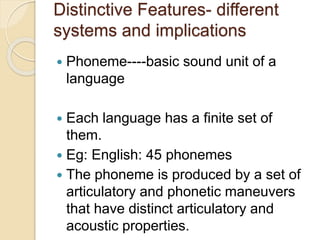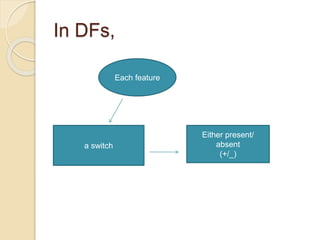This document discusses distinctive features (DFs), which are phonetic features that can be used to analyze and distinguish sounds in languages. It provides an overview of several DF systems proposed by linguists over time to classify consonant sounds using a set of binary or multivalued features. The document also discusses implications of the DF approach in areas like phonological development, speech evaluation, and intervention for children with articulation disorders.









![ Eg of multivalued features includes
using 1,2,3,4, to distinguish b/w
differences in vowel height. Thus [æᵆ]
is considered 1, while [i] is 4
(Ladefoged, 93)](https://image.slidesharecdn.com/distinctivefeatures-220910175519-e293c24a/85/Distinctive-features-pptx-10-320.jpg)
























